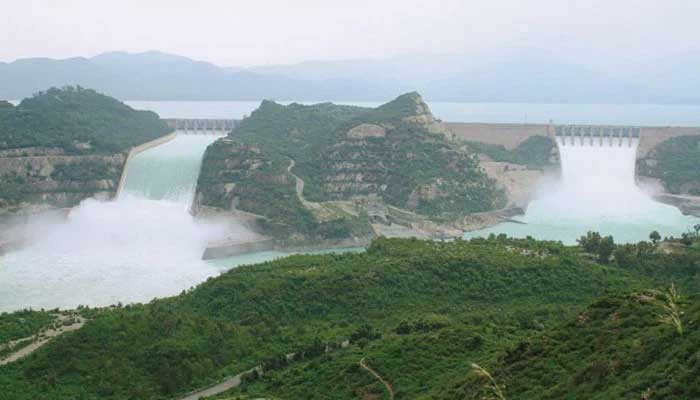KP CM’s Backing of Kalabagh Dam Sparks Debate
The Khyber Pakhtunkhwa chief minister’s support for the Kalabagh Dam represents a major development, given the long-standing and complex discussions surrounding the project, particularly among stakeholders in Sindh province.
The recent expressions of support from the KP chief minister for the Kalabagh Dam are unprecedented. This marks the first instance of a prominent political figure and executive authority from the province openly endorsing this highly contentious water reservoir initiative.
However, KP CM Ali Amin Gandapur’s support will likely remain largely symbolic unless he can garner backing from within his own political party.
Prior to providing substantial support for the Kalabagh Dam’s construction, he may need to secure a resolution from the provincial assembly in favor of the project. For decades, leaders from both Sindh and KP have strongly opposed this project.
Unlike Shamsul Mulk, the caretaker CM of the former NWFP, who was a strong advocate for KBD, Ghandapur has significant political support in the provincial assembly. Nevertheless, securing support from his MPAs will be a considerable challenge.
Located near the Kalabagh Dam site, the arid lands of KP’s southern districts, known for their hot climate, have long suffered from water scarcity. The proposed Kalabagh Dam has the potential to irrigate approximately 440,000 acres of land in KP through the planned Left-Bank Canal. Gandapur is from Dera Ismail Khan, a city on the banks of the Indus River in South KP, which stands to gain significantly from irrigation provided by the proposed KBD.
KP, known for its many rivers, streams, and lakes, could see a transformative development with the Kalabagh Dam project, enabling the first large-scale diversion of river water for irrigation purposes.
This initiative could dramatically improve the lives of local people facing poverty by creating income-generating opportunities in agriculture through the provision of 0.35 million acre-feet (MAF) of irrigation water, greatly supporting agricultural development. The dam would contribute to mitigating drought risks by ensuring a reliable water supply for agriculture.
It is important to note that the KP CM has voiced strong support for the construction of the Kalabagh Dam in recent statements, highlighting its potential to transform Pakistan’s agriculture sector and provide substantial benefits to the nation.
Gandapur believes the dam is vital for Pakistan’s future and could bring about a revolution in the agricultural sector. He encourages dialogue to address any concerns or reservations about the project.
Gandapur emphasizes that the Kalabagh Dam can assist in preventing floods, supplying irrigation water, and generating affordable electricity, which would benefit KP, Punjab, and Sindh provinces. He urges all provinces to collaborate and support the dam’s construction, stressing that its benefits will be shared by everyone and that delays have already resulted in significant losses.
Conversely, Sindh CM Murad Ali Shah has reiterated his opposition to the construction of the KBD, dismissing its proponents who emphasize the dam’s importance in light of recent floods. He and his party have consistently opposed dam construction in the country for various reasons.
In contrast, the approach of the Sindh chief minister is markedly different from that of the neighboring border states of Gujarat and Rajasthan in India, which have actively pursued the utilization of river water for developmental purposes.
The Indian Gujarat state government spearheaded the construction of the Sardar Sarovar Dam on the Narmada River, a project that stirred considerable controversy. Before its completion, virtually all of the river’s water flowed into the delta.
However, with the dam’s construction, India has successfully provided water to the most remote villages in Gujarat, reaching the border with Pakistan’s Sindh province, and has also diverted it to the non-riparian state of Rajasthan. Rajasthan already receives water from the Eastern Rivers via a new canal, irrigating nearly one million acres of arid land. The famous Ahmedabad River Front was also made possible by the diversion of the Narmada River.



Comments (0)
No comments yet. Be the first to comment!
Leave a Comment